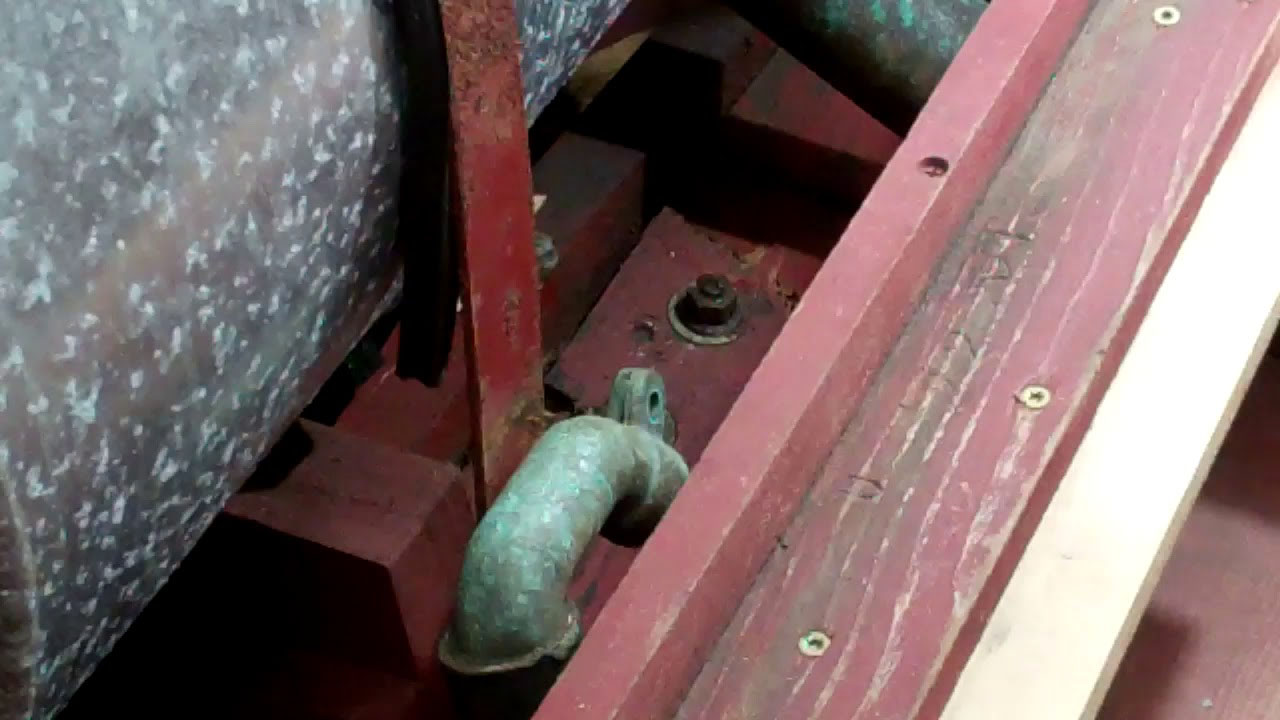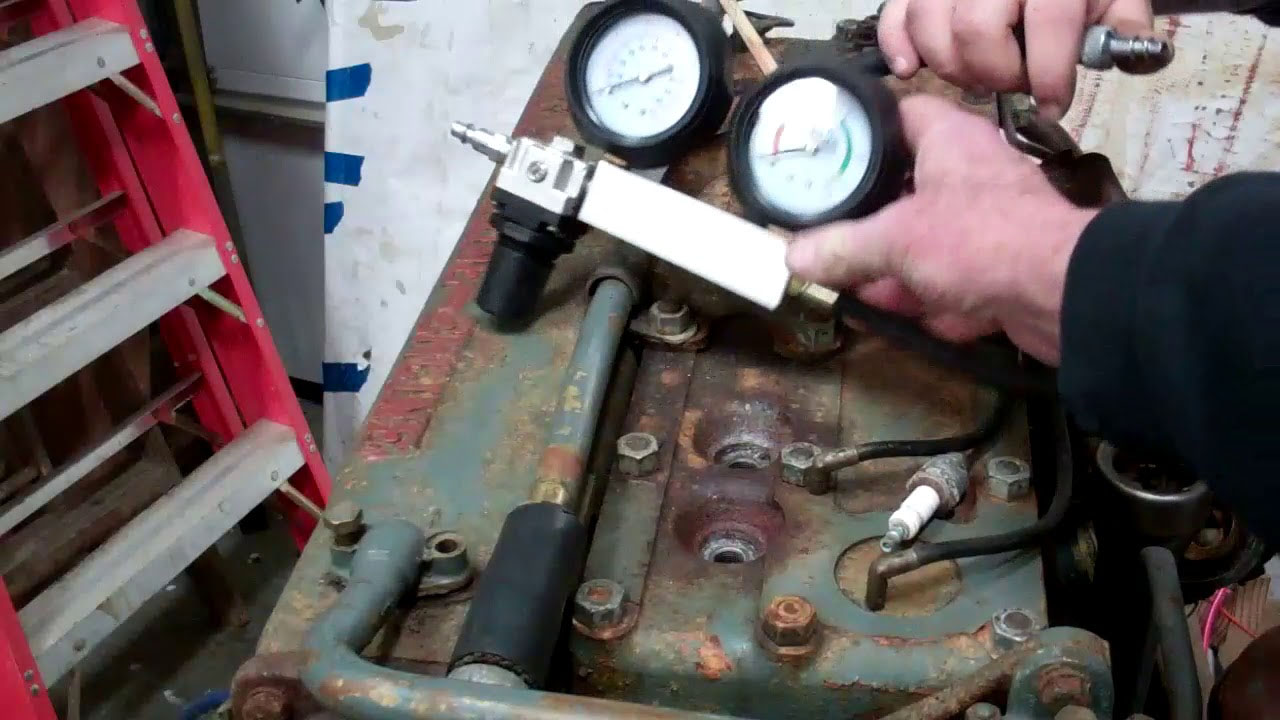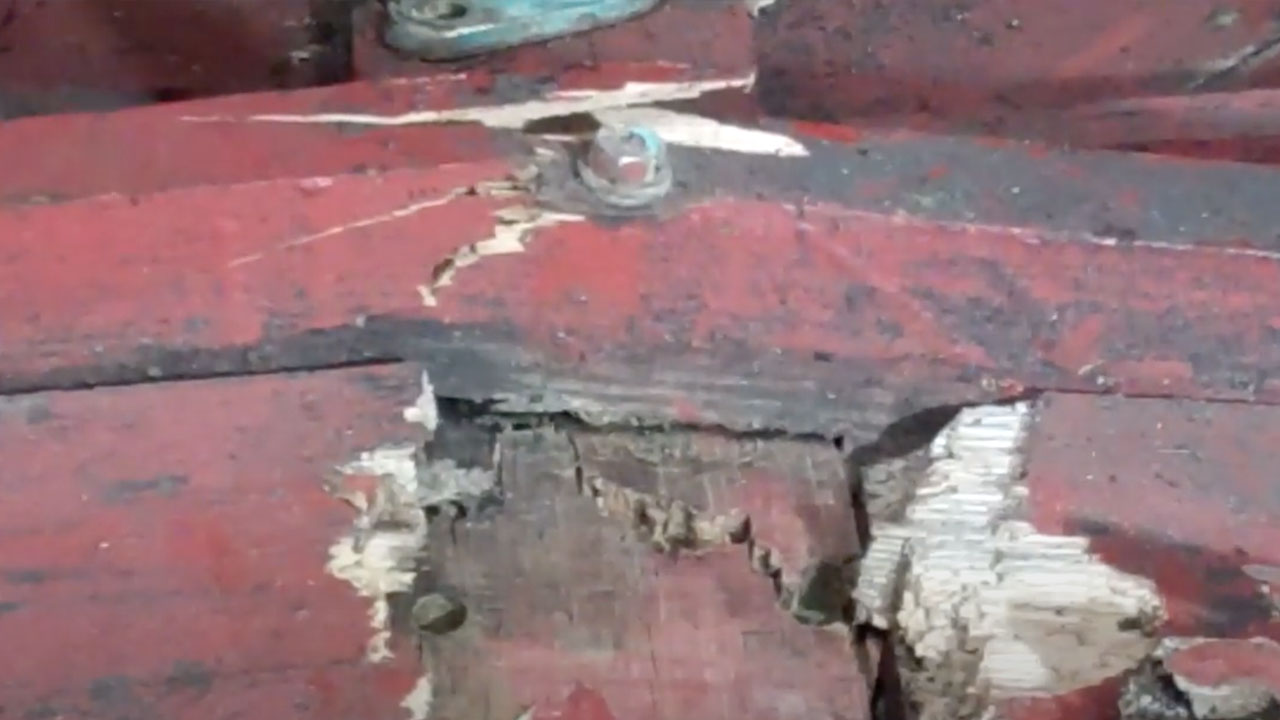Her owners were following their usual and customary route from their cottage to the broad lake, traveling along at a good speed when suddenly and abruptly, she slammed to a stop, nearly ejecting her occupants.
Her lake’s level had dropped significantly and rocks and ledge that had always been well below the surface over the season and in prior years was now just beneath the surface. The crash destroyed her prop, prop shaft, strut, rudder and rudder shaft log.
The force of the crash also destroyed the athwart bottom framing, the keel and the keelson in from the transom to at least two feet forward.
Topside plank fasteners failed under the stress visited upon them, popping rows of bungs in the process.
Two of the Chrysler Crown engine’s mounts failed completely, and a third was severely ripped under the impact. While we cannot diagnose engine issues unless and until the engine is torn down, that RPMs were driven from 2000 +/- to zero instantaneously cannot be good for it.
We will not really know the full extent of the damage until we empty and flip the hull over. The good news is that other than wanting a comprehensive cosmetic do-over, this U22 is in excellent shape, with nary a bit of rot discovered up to this point.
We will strip her completely inside and out and then proceed with refinishing all surfaces.



